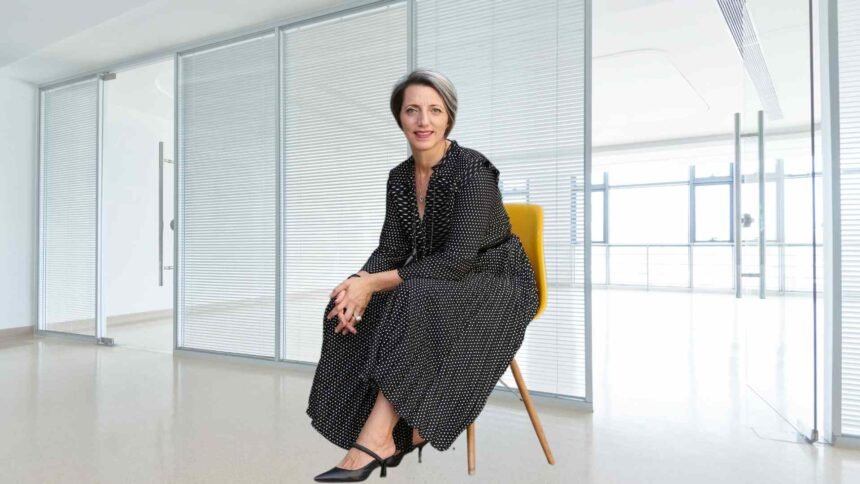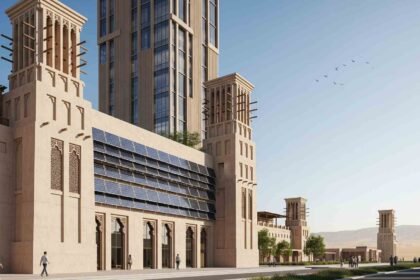Sumaya Dabbagh stands as a beacon of innovation in the Middle East’s architectural scene. As the founder and principal of Dabbagh Architects, based in Dubai, she crafts buildings that resonate with cultural and environmental significance. Her journey from a young girl in Saudi Arabia to a leading architect in the Gulf region reflects her passion for design and her commitment to celebrating local heritage. Through her work, she bridges tradition and modernity, creating spaces that tell stories of identity, memory, and belonging.
Born in Saudi Arabia, Sumaya Dabbagh moved to the United Kingdom at age 13, where her fascination with architecture took root. She recalls childhood trips from Jeddah’s flat landscapes to the rugged hills of Ta’if, which sparked her curiosity about how spaces shape human experiences. At Bath University, she studied architecture under the mentorship of renowned architects Peter Smithson and Sir Ted Happold, earning a degree that blended technical precision with creative vision. This education became the cornerstone of her career, equipping her with the tools to navigate both Western and Middle Eastern design sensibilities.
After graduating, Sumaya honed her skills in London and Paris, working with international firms in the early 1990s. These experiences exposed her to diverse architectural practices, but her desire to reconnect with her cultural roots led her back to the Gulf in 1993. This return marked a pivotal moment, as she sought to understand her identity as a Saudi architect in a rapidly globalizing region.
Professional Journey
Sumaya’s early career in the Gulf included significant work at Schuster Pechtold and Partners, where she contributed to the award-winning Children’s City Project, completed in 2002. This project showcased her ability to design spaces that engage communities and sparked her ambition to forge her path. In 2008, she founded Dabbagh Architects, establishing the first RIBA Chartered practice in the Gulf region. Her firm quickly gained recognition for its quality-driven, culturally sensitive designs across commercial, residential, educational, and cultural sectors.
As a leader, Sumaya played a key role in setting up the RIBA Gulf Chapter in 2009 and served as its Chair from 2015 to 2019. Her leadership fostered a vibrant design community, encouraging dialogue and collaboration among architects in the region. She also participates in conferences and exhibitions, sharing her insights on architecture’s role in shaping cultural identity.
Architectural Philosophy
Sumaya’s approach to architecture is deeply contextual, prioritizing designs that respect the environment and local heritage. She believes architecture is more than constructing buildings—it’s about creating a legacy that influences lives and claims cultural heritage. Her work avoids flashy, iconic structures, instead focusing on spaces that foster community and a sense of belonging. By using local materials and responding to a site’s history, she creates buildings that feel both timeless and rooted in their context.
Her philosophy is evident in her emphasis on the intangible aspects of architecture, such as memory and identity. She designs spaces that connect people to their surroundings, using light, scale, and materials to evoke emotional responses. This approach has positioned her as a leader in a new wave of Gulf architecture that balances modernity with tradition.
Notable Projects by Sumaya Dabbagh
Mleiha Archaeological Centre, Sharjah (2016)
Nestled near Fossil Rock Mountain, this award-nominated centre preserves a 4,000-year-old tomb. Its design blends seamlessly with the desert landscape, offering a thoughtful fusion of heritage and ecotourism.
Mosque of Mohamed Abdulkhaliq Gargash, Dubai (2021)
One of the UAE’s first mosques designed by a woman, this serene, sustainable space in Al Quoz features contemporary Islamic design with local materials and spiritual symbolism.
Al Ain Museum, Abu Dhabi (Ongoing)
This project integrates the 1971 museum, the 1910 Sultan Fort, and surrounding heritage sites. Sumaya’s design bridges past and present, honouring cultural identity through modern architecture.
Earth to Earth Installation, Sharjah Triennial (2023–2024)
Crafted from mud brick and palm fronds, this installation explored the ties between place and culture, emphasizing sustainable, locally sourced materials.
Impact and Recognition
Sumaya’s contributions have earned her widespread acclaim. Dabbagh Architects was listed in the Middle East Architects’ Top 40 Power List for 2015 and 2016, reflecting the firm’s influence. Sumaya received the Principal of the Year award at the Middle East Architect Awards and was a finalist for the Tamayouz Award for Women of Outstanding Achievements in 2019. These accolades recognize her role as a pioneer, particularly as one of the few Saudi female architects leading a practice in the Gulf.
Her work has also gained international attention, with projects like the Mleiha Archaeological Centre celebrated for their innovative approach. By advocating for socially and environmentally sustainable design, Sumaya is shaping a new architectural narrative in the region.
Looking Ahead
Sumaya continues to push boundaries, working on a second mosque in Dubai and participating in architectural competitions in Saudi Arabia. Her ongoing projects reflect her commitment to creating meaningful, context-driven designs. Through her leadership and vision, she inspires a new generation of architects to prioritize cultural sensitivity and environmental responsibility.
Sumaya Dabbagh’s architecture is a bridge between tradition and modernity, East and West. Her buildings tell stories of identity and belonging, inviting people to connect with their surroundings on a profound level. As she continues to shape the Middle East’s architectural landscape, Sumaya remains a visionary whose work will leave a lasting legacy.







